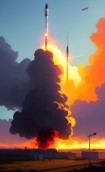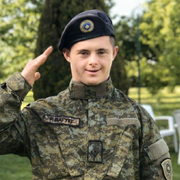- AmyL
- Aug 8, 2013
-

Black Thursday was a disaster, plain and simple.
We lost too many good people, too many planes.
We can't let that kind of tragedy happen again.
|
https://www.usni.org/magazines/proceedings/1997/may/us-marine-corps-review
quote:
The U.S. Marine Corps in Review
By Lieutenant Colonel F. G. Hoffman, U.S. Marine Corps Reserve
The performance of IBM, General Motors, and Ford over the last few decades proves that organizational success is forged in a crucible of intense market competition. Long-term success requires a company to transform itself continually, in response to changes in the strategic environment and customer demands for new services and products. Failure to respond leads to obsolescence. The same is true for our military forces today. In the face of a dramatically different security situation and revolutionary technologies, standing still today equates to stagnation, operational failure, and-ultimately-irrelevance.
What separates successful visionary organizations from the pack is the cultivation of a culture that accepts change as an opportunity rather than a threat. The very few truly visionary organizations constantly adapt and breed ideas. More important, they transform the ideas rapidly into operational capabilities.
While the phrase "institutionalizing innovation" might seem an oxymoron, the Marine Corps made major steps in 1996 to do just that. Much of this effort took place at the Marine Corps Combat Development Command (MCCDC) at Quantico, Virginia. Under the command of Lieutenant General Paul K. Van Riper, Quantico is living up to its reputation as the intellectual crossroads of the Corps. General Charles Krulak, Commandant of the Marine Corps and a former commanding general at Quantico, calls it the crown jewel in what he describes as the Corps' two major purposes: making Marines and winning battles.
Institutionalizing Innovation
Innovation is hardly new for the Marine Corps. During the last major revolutionary era just prior to World War II, the Marines saw amphibious operations as an opportunity-where others saw only failure and limitations-when they anticipated the need to project U.S. naval power across the vast distances of the Pacific. From 1919 to 1939, the Marines studied the Dardanelles campaign, mined it for critical lessons, and reengineered amphibious warfare to produce an operational vision for the next generation of Marines. In experiments then known as Fleet Exercises or FLEXs, concepts developed at the Naval War College at Newport, Rhode Island, and Quantico were refined to make this operational vision a reality. The successes of the Pacific campaigns in World War II can be traced to this process. The FLEXs of the 1920s and 1930s produced a proven model for today's Corps to emulate.
The Commandant's Warfighting Laboratory at Quantico and its Sea Dragon experimentation process are today's vehicles for accelerating innovation. In order to fulfill the Commandant's intent that the Warfighting Laboratory serve "as the cradle and test-bed for the development of enhanced operational concepts, tactics, techniques, procedures, and doctrine" for introduction into the Fleet Marine Force, a fairly comprehensive experimentation plan has been developed. As of May 1997, the Marine Corps has completed the first of two increments of the first phase of this plan. This initial phase, known as Hunter Warrior, commenced in January 1996, and focused on the development of operational concepts and advanced tactics for operations in an expanded littoral battlefield. The first increment culminated in a major force-on-force Advanced Warfighting Experiment (AWE) during February-March 1997 at the Marine Corps Air-Ground Combat Center, 29 Palms, California.
The Warfighting Lab conducted a series of Limited Objective Experiments (LOEs) during 1996 as part of the buildup to the culminating AWE. These included battlefield engagement experiments, new targeting procedures, innovative means of providing timely and precise combat service support, improvements in small-unit tactical mobility, and the use of nonlethal technologies. The use of unmanned gliders as a way of resupplying units operating in an expanded battlefield without disclosing their positions was tested. In another experiment, a "Gecko," a wheeled ground robot, was controlled from a distance of two miles to examine its application as a ground reconnaissance and target acquisition system. If vision and experimentation are the sine qua non of long term success, then Sea Dragon, while not the answer, is certainly a means to that end.
The Corps is stretching its mental muscles with the New Sciences program, an effort to explore the potential of complexity, chaos, and other "nonlinear" sciences. Like the 19th-century theorists who relied upon the physical sciences to explain warfare, the Marine Corps looks to these new sciences for insights and explanations for the complex phenomenon of 21st-century combat.
Once limited to purely abstract theories in the pop-science literature, practical applications of the new sciences are making headway in the business world, where several firms are applying nonlinear solutions to economic forecasting and manufacturing problems. Thanks to these new sciences, an eclectic new lexicon has emerged in discussions about combat at MCCDC-chaos, complex adaptive systems, genetic algorithms, nonlinearity, and self-organizing systems are terms frequently used around Quantico and in doctrinal publications.
The Marine Corps views war as a nonlinear system and believes that the study of war can benefit from this approach. To support this inquiry, MCCDC has sponsored two conferences and promoted research projects with industry, academia, and think tanks, including the Santa Fe Institute-internationally recognized as the incubation center for ideas and research in this new discipline. The curriculum at the Marine Corps University includes an introduction to this emerging field, and students have explored the new sciences as part of their future warfare studies.
Operational analysis and computer based combat simulations are areas under consideration for applying these new sciences. Today's simulations are based on deterministic or attrition-based models that fail to capture the essence of warfare: an intelligent, adaptable foe. New computer models using genetic algorithms have demonstrated the ability to adapt and learn during battles. This is a risky area of research in an embryonic field, but risk-taking is part of "riding the dragon of change." There are no guarantees. "We continue to investigate this area not because [these models] will provide all the answers," said General Van Riper, "but because they offer the only known opportunity for exploring many of the important features of warfare."
The information age affects more than military organizations, and the Corps has reached out beyond what many construe as the traditional bounds of military theory; the relationship with the Santa Fe Institute is one example. Another initiative involves the study of environments where rapid decisions must be made in an environment of information chaos and overload. To learn from other professions with information-rich operating environments, the Marines have teamed with the New York Mercantile Exchange in a series called Trader's Games.
Of particular interest are the dynamics of decision-making processes coupled with absorbing large volumes of digital information and making decisions from pattern analysis and intuition. The Marines believe that in future, time-compressed combat environments, the leader who can develop decisions and implement them faster than his opponent will gain a major advantage. Traders in the volatile futures and commodities markets have similar problems. As one of the senior Marine participants put it during the third game conducted in February 1997 in New York, "If they want to ensure accuracy, the deal will go by, and if we wait, an opportunity in a particular battle will go by." Hence, their methods and techniques are of special interest to the Marine Corps as a possible baseline for future battlefield success.
From these experiences, the Marines recognized that the traders had something to teach them about learning to grasp patterns quickly from a seemingly chaotic display of varied forms of information, and how to use large information displays to identify patterns and gain feedback for faster decisions. From this exchange, the Corps has initiated a number of new training initiatives to permit Marines to get decision-making practice from daily discussions about military matters, small tactical problems, and computer simulation games.
Organizational Initiatives
The Marine Corps' recently established Chemical Biological Incident Response Force (CBIRF) is a clear example of the services' ability to meet rapidly a new requirement with a new capability. This unit was conceptually developed from January to March 1996, approved on 4 April, and activated on 15 June. It is composed of approximately 400 Marines and Sailors and based at Camp Lejeune, North Carolina. Its mission is to respond to chemical and or biological incidents worldwide, with a focus on caring for the casualties and after-effects of a chemical or biological incident. The unit has access to the aggregate knowledge of leading U.S. experts through an electronic link. The CBIRF was first deployed last summer for the Summer Olympics in Atlanta.
Other organizational innovations include the development and use of nonlethal technologies. Leveraging recent Marine Corps operational experience with such technologies during Operation United Shield in Somalia in 1995, the Corps was designated the Pentagon's Executive Agent in March 1996, to ensure the further development and deployment of this capability throughout the armed forces. The capabilities fit the Corps' anticipated need for future conflicts that might preclude lethal and indiscriminate firepower. As Lieutenant General Anthony Zinni, the former Combined Task Force Commander during United Shield, noted, "With nonlethal weapons, we can address more situations effectively and have a better chance of controlling the escalation of violence in the complex environments we are most likely to encounter." Marine expeditionary units began deploying with these technologies in 1996.
Training and Education
The Corps continued to focus on the individual Marine, rather than technology or platforms. On the battlefields of the 21st century, according to General Krulak, "the junior enlisted Marine is going to have access to, and the need to use, more information than a battalion commander might today." Thus, to operate successfully in this environment, the Marine must be comfortable with high technology weapon and information systems, and trained to know what to do with them, all the while remaining a warrior without peer.
In chaotic situations, the Corps requires leaders and Marines who can tolerate ambiguity and uncertainty and make rapid decisions under stress. Accordingly, the Marine Corps continued to stress professional military education and daily tactical decision making, and took steps to acquire and distribute a variety of simple but effective computer games throughout the Corps.
The Corps' biggest efforts to enhance individual Marine training began in late 1996 at the recruit training depots at Parris Island and San Diego. The traditional transformation that takes place at these institutions was strengthened in an effort to produce a Marine totally imbued with the ethos and values of the Corps and fully prepared to win on the battlefield of the 21st century. On 1 October 1996, recruit training was extended to 12 weeks, for both male and female recruits. Supporting this change is a dramatic enhancement of core-values acculturation, totaling more than 60 hours of instruction, discussion, and training reinforcement critiques.
The capstone of this enhancement effort is the addition of what is called the "crucible" event-the culmination of the entire recruit training experience. It is a 54-hour field training evolution highlighted by food and sleep deprivation, physical and mental tasks, and a pace that relentlessly challenges the recruits while emphasizing core values and the importance of teamwork in overcoming adversity. The crucible is the defining moment of recruit training and establishes the foundation for continuing the Marine's values and character development throughout a career of three years-or 30 years. Those who complete it view a video narrated by the Commandant, which enables him to reinforce the significance of completing the test and, more important, address each one of them for the first time by the title "Marine."
Complementing these efforts is an initiative to enhance unit cohesion. Military history demonstrates time and again the enhanced combat effectiveness of military units with high cohesion. To make the most of the vast power of cohesion, the Marines want their new troops to join together, train together, and stay together longer than present recruiting, initial skill, and final specialty skill training programs permit. A team-integrity program at military-specialty-producing schools was established in late 1996 to synchronize the Marine enlisted training cycle with the deployment rhythms of the operational forces. This life-cycle approach should improve the Corps' use of personnel resources, reduce attrition, provide longer periods for progressive training, increase unit stability, and ultimately increase fighting power.
The Marine Corps stresses the moral development of its leaders at all stages of the educational system, beginning at recruit training but continuing throughout the full career. According to Brigadier General Rusty Blackman, President of the Marine Corps University, "While honor, courage, and commitment have been hallmarks of the Corps for more than 200 years, we wanted to reaffirm these values and their centrality in today's dynamic age." The Commandant is aware that generating cohesion and transforming moral values is an uphill fight and that these programs could easily be seen as a subtle criticism about the fraying social fabric of America today. He does not shy from the issue. "The parents of America are working overtime to build good Americans," he commented, "That's my struggle too."
Operations
The year's operational activities began in Haiti, with Marines supporting the United Nations and the U.S. Support Group, Haiti. Combat Service Support Units and Fleet Antiterrorism Security Teams from II Marine Expeditionary Force (MEF), Camp Lejeune, assisted that struggling democratic state. Other II MEF Marines provided security and support services to Joint Task Force 160 in Operation Sea Angel, the migrant handling and processing task at Guantanamo Bay, Cuba. Counterdrug operations continued along the Southwest border of the United States, and in the Caribbean with Marine operational missions, radar support sites, and logistics providing a significant boost to interdiction operations in the region.
Marine strike and aerial refueling aircraft, as well as security elements, continued to support humanitarian relief tasks in Operation Provide Promise in Bosnia until March 1996. A Marine Expeditionary Unit-Special Operations Capable [MEU(SOC)] remained poised in the Adriatic as theater reserve for NATO. Since June, the Marine Corps has provided an unmanned aerial vehicle whose mission is imagery and intelligence support. Marine F/A-18 fighter-attack and EA-6B electronic-warfare aircraft, operating out of Aviano, Italy, continued to provide support to the International Force as part of Operation Decisive Edge.
The Persian Gulf may have dropped off the Cable News Network scope, but it remains a volatile region critical to the United States and its allies. The Marines provided support in the form of sorties from carrier-based squadrons and amphibious shipping as the U.S. continued enforcement of United Nations-imposed no-fly zones over Iraq. AV-8B Harriers made their first appearance in Operation Southern Watch in 1996, flying from the amphibious assault ship Peleliu (LHA-5).
The importance of the Pacific is well recognized by the Marine Corps. Almost two-thirds of the Corps' operational forces are assigned to this strategically critical theater, which includes half the globe's surface area and more than 60% of its population. It remains an economically dynamic region providing jobs to 2.5 million Americans and accounting for more than one-half trillion dollars in trans-Pacific trade with the United States. Not surprisingly in such a maritime theater, U.S. naval forces are heavily engaged, particularly in Northeast Asia, near Korean and Japanese allies. In December, 360 Marines from III MEF deployed to Guam for Operation Pacific Haven, to assist Kurdish refugees seeking asylum.
Ethnic violence, famine, and disease continue to ravage parts of Africa. In response to these destabilizing influences, Marine forces were ordered to Liberia from their station in the Adriatic in April 1996. During Operation Assured Response, the 22d MEU(SOC) and the USS Guam (LPH-9) Amphibious Ready Group moved offshore Monrovia, Liberia, the site of Operation Sharp Edge in 1990. The commanding officer of the 22d MEU(SOC), Colonel M. W. Forbush, was designated commander of Joint Task Force Assured Response upon arrival on 20 April. In addition to reinforcing the U.S. embassy in Monrovia, the task force evacuated 49 American citizens and 260 other noncombatants. While in the middle of this tense mission, the Amphibious Ready Group and MEU were ordered to dispatch assets 1,500 miles inland to the Central African Republic of Bangui in an operation dubbed Quick Response to evacuate 448 noncombatants, including 208 U.S. citizens. Meanwhile, the USS Trenton (LPD-14) and the USS Tortuga (LSD-46) moved back to the Mediterranean to participate in a major allied exercise, Matador 96, off the coast of Spain. The 22d MEU(SOC)'s performance manifestly demonstrated the range (3,200 miles), flexibility, and responsiveness of naval forces.
Exercises
Cooperative Osprey 96 was conducted at Camp Lejeune as part of the Partnership for Peace program, a critical component of the ongoing NATO effort to establish a relationship with Eastern European nations. Under the direction of the Commanding General, Marine Forces Atlantic, Lieutenant General Charles E. Wilhelm, U.S. Marine Corps, this 16-nation exercise used a military-operations-other-than-war scenario to test the ability of a coalition force to conduct peacetime operations in a littoral area. As part of the exercise, Marine forces trained with forces from Bulgaria, Romania, and Ukraine, helping make Cooperative Osprey the largest North Atlantic Alliance Partnership for Peace exercise held on America soil to date.
Another highlight was the regular U.S.-Norwegian Exercise Battle Griffin. What made this an unusual exercise was the extensive Marine Reserve participation, including the commanding general and the Marine air-ground task force headquarters. Overall command of the exercise was assigned to Brigadier General Kevin B. Kuklok, who commanded the roughly 4,200 Marines and Sailors involved in the three-week deployment. Almost 90% of the force were reservists, who provided relief for active-duty forces while demonstrating their readiness. The exercise confirmed that the success of the Marine Corps Reserve in Desert Storm was no accident.
South America is familiar to the Marine Corps and the annual UNITAS deployment is one of the Corps' many concrete contributions to regional security relationships. This five-month-long deployment cemented friendships and provided solid evidence of our interest in stability throughout the hemisphere-with a total of six exercises involving nine countries and visits to 27 cities. This year's deployment was expanded to include participation by Germany, Canada, and the United Kingdom.
The number and depth of exercises in the Pacific underscored the region's importance. RIMPAC is a biennial exercise to measure and improve the interoperability of multinational forces that might operate together along the Asia-Pacific Rim. RIMPAC 96 saw more than 1,200 Marines participate in a force comprised of 28 ships including the 11th MEU (SOC) with the USS Essex (LHD-2) Amphibious Ready Group. Ships from Canada, Chile, Australia, Japan, and Korea exercised with those of the United States. The 3d Battalion, 3d Marines, teamed with the 38th Japanese Infantry Regiment in a nine-day training exercise in Japan called Forest Light. Other Marines visited Vladivostok as part of Exercise Cooperation From the Sea 96. III MEF, commanded by Major General Wayne E. Rollings, U.S. Marine Corps, also participated in exercises Cobra Gold 96 and Freedom Banner 96, which were conducted concurrently. III MEF served as the joint task force headquarters nucleus and formed a combined joint task force with the assigned Thai forces. The highlight of the exercise-Freedom Banner-was an offload of two Maritime Prepositioning Force ships in the stream.
The biggest exercise of the year was Combined Joint Task Force Exercise 96. This combined-arms exercise, which involved more than 38,000 U.S. and nearly 16,000 British troops, was conducted at Camp Lejeune and the coastal region off North Carolina. It represented the biggest exercise between U.S. and U.K. forces since World War II-more than 50,000 troops, 300 airplanes, and 53 ships participated. The exercise was marred by the deaths of 12 Marines, 1 Sailor, and 1 Soldier when a CH-46E Sea Knight helicopter collided with a AH-1W Super Cobra in an early morning assault at Camp Lejeune. The crash was the deadliest accident of the decade.
In addition to supporting a strategy of engagement abroad, the Marine Corps also made invaluable contributions at home. Marine Reservists conducted a civic action exercise called Arctic Engineer in Noorvik, Alaska. In September, more than 500 Marines from Camp Pendleton, California, deployed to the Umatilla National Forest, Oregon, to assist the National Interagency Firefighting Center with firefighting efforts. Finally, the recently activated CBIRF deployed to Atlanta in support of the 1996 Olympics.
Total Force
Making Marines and winning battles pose special challenges to Marine Forces, Reserve, commanded by Major General Thomas L. Wilkerson. Reserves met this challenge in the Gulf War, but they cannot afford to stand pat if they expect to achieve integration in today's fast-paced operational environment. General Wilkerson agrees, noting "We can't afford to rest on past accomplishments. We have to constantly improve, innovate, look for smarter ways to do business. We have to learn to make change our ally."
Judging from Reserve performances from Operation Sea Signal at Guantanamo Bay, Cuba, to the cold weather of Exercise Battle Griffin, the reserves are living up to that task. Past recruiting and retention challenges were overcome in 1996. All unit commanders were tasked at the beginning of the year with giving their Marines a clear picture of their wartime mission, and realistic and rewarding training related to this mission. As General Wilkerson commented, "Our citizen Marines are willing to make the additional sacrifices Reserve participation entails in exchange for these challenges." Without such challenges, drill participation and unit readiness decline rapidly.
Increased mission readiness was evident in Kentucky last October in the first annual Gunnery Sergeant R. H. McCard Tank Gunnery Competition held on the Yano Range at Fort Knox. The competition pitted two Reserve crews against two active MlA1 crews, representing the best of their respective battalions. A Reserve crew, commanded by Corporal G. L. Dunkle, from 4th Tank Battalion, Boise, Idaho, took top honors in closely contested competition with their active-duty peers.
The Reserve Force has established a leading-edge information network called the R-Net, which will link the roughly 200 Reserve Training Centers to New Orleans. The R-Net provides the ability to pass or obtain information rapidly using a LOTUS Notes database and an advanced wide-area network system, something that the active force does not yet have. Given the geographic dispersion of Reserve units, R-Net's capacity to share information and coordinate training tasks will simplify administrative work.
Probably the most far-reaching initiative was the new Readiness Support Program. Employing more than 600 reservists assigned in small teams to each training center, the program aims to resolve a number of deficiencies that surfaced during the mobilization for Desert Storm. The program created peacetime-wartime teams to solve these problems, as well as to assist the inspector-instructor staffs with grass-roots community support.
Programs
In 1995, the Marine Corps got modest increases from Congress to meet pressing modernization demands for the Fleet Marine Force. In 1996, however, Congress finally realized how real the Corps' hardware needs were, and appropriated $1.5 billion more than the Pentagon had requested (see Table 1). Personnel and readiness accounts received modest increases, but $50 million was added for quality-of-life enhancements. Most of the increase went to procurement and R&D accounts, and more than $161 million was added for ground modernization. Most of this went to fund ammunition and the Multiple Integrated Laser Engagement System (MILES), a training simulation system. Aviation got the lion's share of congressional generosity, with almost $935 million added to the $1.5-billion request. The additional funds were to increase procurement and long-lead items for MV-22s, KC-130s, and 6 F/A-18s. The R&D appropriations also were increased by more than $300 million, including $35 million for the Commandant's Warfighting Lab and $10 million for nonlethal technologies.
The Corps moved forward with several major acquisition programs in 1996 that continue to receive congressional support. These programs, notably the MV-22 Osprey and the Advanced Amphibious Assault Vehicle, are essential to bring to fruition the Corps' principal operational concept-Operational Maneuver From the Sea (OMFTS).
The concept requires Marines to strike from over the horizon and to project land forces deep into an enemy's rear areas. The current medium-lift helicopter, the CH-46, simply does not have the range or lift capability to do this. In contrast, MV-22s carrying 24 combat-equipped Marines-flying more than twice as fast and with four times the range of the venerable Sea Knight-offer commanders a revolutionary capability for power projection. The Corps hopes to receive the first of 425 production models in 1999 and to achieve an initial operating capability by 2001. Congress saw fit in 1996 to increase the Pentagon's plan for initial production funding from four to five in 1997. The Corps continues to lobby for an accelerated schedule that should save billions over the current Pentagon-imposed plan, which drags out production over several decades.
The new Advanced Amphibious Assault Vehicle (AAAV), together with the V-22, will complete the amphibious portion of the operational maneuver triad: V-22, AAAV, and the Landing Craft Air Cushion (LCAC). Each component is critical for the execution of operational maneuver from the sea. The ability of the AAAV to transition swiftly from high speed sea movement to high-speed land operations gives Marines a great increase in their ability to apply force at operational depths. With three times the water speed and twice the current armor protection of the 40-year old model it replaces, the AAAV will permit the projection of forces from sea to inland objectives using its high speeds-up to 45 miles per hour-to exploit weak points in an enemy's defense. The AAAV program made several major strides in 1996. In June, General Dynamics Land Systems beat out United Defense to win a $216 million demonstration-validation contract. General Dynamics, which will develop three prototype systems, has opened a facility in Woodbridge, Virginia, to maintain a close relationship with MCCDC and the Marine Corps Systems Command at Quantico. The Marine Corps will seek initial fielding sometime in 2005. Congress provided $20 million in additional funding for 1997 that will accelerate final development by one year.
A Navy-Marine Corps power-projection force creates significant opportunity for strategic and operational maneuver, but the opportunity is predicated upon sufficient naval platforms to lift and maintain a sea-based posture. Inadequate amphibious shipping, however, precludes sea basing and maneuver from the sea. Thus, the December 1996 contract award for the USS San Antonio (LPD-17), lead ship of a new class, was good news. The ships will have a crew of 493 and carry more than 700 Marines. Capable of sustaining a speed of 22 knots under way, the LPD-17 class has deck space for two CH-53Es or two MV-22s, and carries two LCACs. The first LPD-17 is scheduled to arrive in 2002.
No congressional authorization and appropriation cycle would be complete without a little excitement. Since the Goldwater-Nichols Reorganization Act was passed in 1986, the Corps has been underrepresented in joint commands and external billets. The Corps has the fewest general officers, in relative terms, but a few critics objected to the Corps' request for additional generals. In the end, the Corps got an authorization for an additional 12 generals, who will be assigned to joint warfighting or operational billets.
Assessment
Last year's assessment identified three challenges for the Corps: maintaining a credible Pacific presence, acquiring money for modernization programs, and preserving the primacy of personnel over technology. The present Commandant has made significant progress on all three fronts.
With a projected 30% of U.S. trade dependent upon overseas markets by 2010, threats to the global economy will have a direct impact on U.S. economic health-and the Pacific Rim could account for as much as half of U.S. exports by then. With seaborne trade quadrupling, protecting sea lines of communication therefore will become a vital U.S. national security interest. Accordingly, the Commandant pursued a new training initiative with Australia, which was eventually approved by then-Secretary of Defense William Perry and the Australian government. The number of exercises held in the area will increase in 1997, as will an exchange of school quotas between respective staff colleges. The Corps also dispatched a survey team to explore potential training sites.
Adjustments to Marine presence on Okinawa were negotiated with the Japanese, leaving the Corps' critical position astride the major Pacific sea lanes relatively intact. Regional training and exercise programs have been improved, but more can be done with educational programs and language training in the Corps.
Congressional funding brought operational maneuver from the sea a small step closer to reality. The Corps has been long on vision and short on cash for about a decade now; Congress seems poised to change the cash trend, but the line-item veto could hamstring the Corps' usual supporters. The Marine Corps' ground modernization program is about to reach several critical milestones-the AAAV, artillery, and tactical mobility. All require a major cash infusion. The most significant obstacle will be battles over future military requirements in the Quadrennial Defense Review and the National Defense Panel. Getting the new Secretary of Defense, William Cohen, to increase the glacial MV-22 production schedule also is critical.
Of all the success stories in 1996, none offers more significant or more subtle change than the "transformation" program. In an age where an inordinate emphasis is placed on technology, the Corps continues to recognize that highly trained and educated people are the ultimate military platform and the cornerstone of the Corps. With its transformation program, and related training components, the Marines appear committed to ensuring that tomorrow's leaders have the proper training, education, and character to succeed both in operations short of war and on the chaotic battlefields of the 21 st century.
The entire Marine Corps is undergoing a far more significant, but less visible, transformation. In all the ongoing programs at MCCDC, from the warfighting lab to the new sciences, the Marines are pressing forward across a wide front. This institutional transformation, which refocuses the Marines on the needs of the next century, will, like all forms of innovation, involve some degree of debate. The interwar development of the Fleet Marine Force and the Tentative Landing Manual did not emerge without opposing views, and many Marines still do not perceive a need for change, continuing to focus myopically on the tried-and-true expeditionary skills that are today's tool kit for crisis response. The Commandant will have to educate his Corps on the need to look forward and adaptor be swept aside. The Corps cannot afford to wait until the 21st century to react.
Many ideas will be put forward in the near future, and they should be put to the test in war games, exercises, and actual operations. Some of these ideas will be found far beyond the bounds of traditional science and military technologies for new tools and techniques, which is why one finds Marines at the stock exchange and the Santa Fe Institute. Some ideas will succeed, and surely some will flop. The prognosis looks good, but stimulating progress while retaining core capabilities can be a daunting task. Moving ahead while defending the Corps' stake in the upcoming defense reviews will require a highly focused effort in 1997.
Working has intended.
AmyL has issued a correction as of 08:02 on Mar 22, 2024
|











































